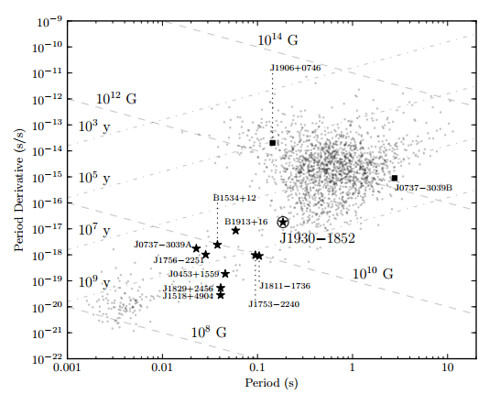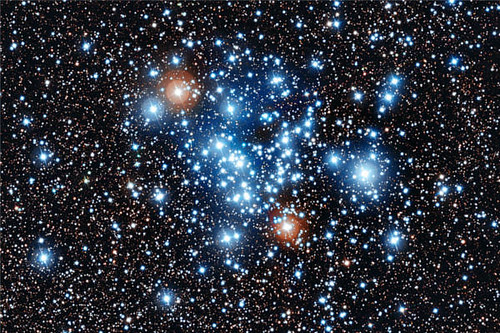Big Bang Monday: DNS Pulsar
Monday, May 4th, 2015
DNS in this case stands for “double neutron star” and a pulsar in the widest known orbit around another neutron star was discovered by two high school students.
In the summer of 2012, during a Pulsar Search Collaboratory workshop, two high-school students discovered J1930−1852, a pulsar in a double neutron star (DNS) system. Most DNS systems are characterized by short orbital periods, rapid spin periods and eccentric orbits. However, J1930−1852 has the longest spin period (Pspin∼185 ms) and orbital period (Pb∼45 days) yet measured among known, recycled pulsars in DNS systems, implying a shorter than average and/or inefficient recycling period before its companion went supernova. We measure the relativistic advance of periastron for J1930−1852, ω˙=0.00078(4) deg/yr, which implies a total mass (Mtot=2.59(4) M⊙) consistent with other DNS systems. The 2σ constraints on Mtot place limits on the pulsar and companion masses (mp1.30 M⊙ respectively). J1930−1852’s spin and orbital parameters challenge current DNS population models and make J1930−1852 an important system for further investigation.

A P–P˙ diagram showing all pulsars in DNS systems (stars/squares) and all other known pulsars (dots). Measured P and P˙ come from the ATNF Pulsar Catalog (Hobbs et al. 2004) and lines of characteristic age and surface magnetic field are shown with dot-dash and dashed lines, respectively. Recycled DNS pulsars (stars) appear between the normal and millisecond pulsar populations and are listed in Table 2. Despite its significantly longer spin period, J1930−1852 clearly belongs in the population of recycled DNS pulsars, unlike J1906+0746 and J0737−3039B (squares) – neither of which have undergone recycling.
With so many astronomers engaged in this type of work, it’s inspirational to find younger ones with no inhibitions and lots of hope continues to reap the rewards of discovery.
<
